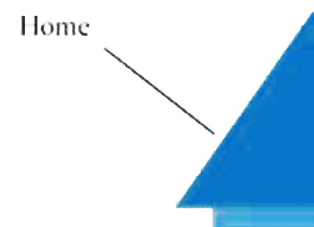Submissions
Submission Preparation Checklist
As part of the submission process, authors are required to check off their submission's compliance with all of the following items, and submissions may be returned to authors that do not adhere to these guidelines.- All requirements for the technical design of the text, including requirements for tables, figures, formulas, references in the text of the article, preparation of the list of references, provision of full information about the authors, etc., according to the rules for the author guidelines, have been met.
- All requirements for the substantive part of the article, including compliance with the structure of the manuscript and its content according to the rules for the author guidelines, have been met.
- The manuscript is not under consideration in any other journal, conference, etc.
- All authors of the manuscript have read its content. No copyrights have been violated. All authors of the article meet the authorship criteria.
- The material of the manuscript is unique and has not been published previously in whole or in part in the language in which the manuscript is sent to the editorial office of the "ScienceRise: Pharmaceutical Science", as well as in any other language.
- Any conflict of interest is indicated in the text of the manuscript in the appropriate section.
- Any use of artificial intelligence is indicated in the text of the manuscript in the appropriate section.
- Artificial intelligence was not used to write any of the substantive parts of the manuscript. Any use of artificial intelligence for technical tasks (e.g., grammar checking, etc.) was additionally checked by a human from among the authors of the manuscript and indicated in the appropriate section of the manuscript text.
- The authors of the manuscript have read the publisher's policy and these terms and conditions, which are listed on the "General Terms and Conditions" page.
- The authors have read the terms and conditions of payment for publication.
Copyright Notice
The consolidation and conditions for the transfer of copyright (identification of authorship) is carried out in the License Agreement. In particular, the authors reserve the right to the authorship of their manuscript and transfer the first publication of this work to the journal under the terms of the Creative Commons CC BY license. At the same time, they have the right to conclude on their own additional agreements concerning the non-exclusive distribution of the work in the form in which it was published by this journal, but provided that the link to the first publication of the article in this journal is preserved.
A license agreement is a document in which the author warrants that he/she owns all copyright for the work (manuscript, article, etc.).
The authors, signing the License Agreement with TECHNOLOGY CENTER PC® publisher house, have all rights to the further use of their work, provided that they link to our edition in which the work was published.
According to the terms of the License Agreement, the Publisher TECHNOLOGY CENTER PC® does not take away your copyrights and receives permission from the authors to use and dissemination of the publication through the world's scientific resources (own electronic resources, scientometric databases, repositories, libraries, etc.).
In the absence of a signed License Agreement or in the absence of this agreement of identifiers allowing to identify the identity of the author, the editors have no right to work with the manuscript.
It is important to remember that there is another type of agreement between authors and publishers – when copyright is transferred from the authors to the publisher. In this case, the authors lose ownership of their work and may not use it in any way. This type of agreement is not used for journals of TECHNOLOGY CENTER PC® publisher house.
Privacy Statement
The editorial board of the "ScienceRise: Pharmaceutical Science" pay special attention to hold all information in confidence that comes to the editorial board and has not been published yet.The basic principles the editors follow:
- All reviewers confirm the confidentiality of information with which they work up to the time of the paper publication.
- If a reviewer needs help or advice of experts about a particular subject matter, the reviewers report to the editorial staff and get permission for such consultation.
- The information, proposed by the authors to the editors, is not transferred to third parties.
- All contact information, which the authors give to the editorial board, is used only by the editors and is not transferred to third parties.










